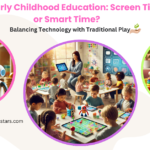
Introduction: The Quiet Revolution in Neurodiverse Classrooms
For years, students with neurodiverse conditions—such as autism, ADHD, dyslexia, and other learning differences—have struggled in traditional education systems that prioritize standardized methods of teaching. However, artificial intelligence (AI) is now revolutionizing how neurodiverse students learn, offering personalized, adaptive, and accessible education like never before. Despite these advancements, many schools are still lagging behind in implementing AI-powered solutions, leaving neurodiverse students underserved. So, how exactly is AI transforming neurodiverse learning, and what crucial aspects are schools missing?
In a Colorado classroom, 8-year-old Liam—a non-verbal student with autism—typed his first full sentence using an AI-powered tablet. His teacher cried. His classmates cheered. His parents called it a miracle.
This isn’t magic. It’s the power of AI-driven inclusive education—a seismic shift in how we support neurodiverse learners (autism, ADHD, dyslexia, and more). Yet, while tools like emotion-recognition AI and adaptive learning apps are transforming lives, most schools remain stuck in a one-size-fits-all mindset.
Here’s what’s working, what’s not, and how to bridge the gap.
Also read: AI in Special Education: Top Tools Transforming Learning🚨 The Problem: Why Traditional Classrooms Fail Neurodiverse Minds
Neurodiverse students represent 15-20% of learners globally (WHO, 2021), yet studies show over 60% feel excluded or misunderstood in traditional classrooms (UNESCO, 2020; Autism Speaks, 2023) Yet, traditional education remains locked in a ‘neurotypical-first’ framework, forcing millions of students to struggle in classrooms that fail to accommodate them.
The Crisis in Numbers
- 70% of neurodiverse students report feeling “ignored” or “misunderstood” in mainstream classrooms (UNESCO, 2020).
- 1 in 3 teachers admits lacking training to support neurodiverse learners (National Education Association, 2023).
- Dropout rates are 2.5x higher for neurodiverse students compared to neurotypical peers (CDC, 2022).
Why Traditional Systems Fail
🔹 The Rigidity Trap
Classrooms demand conformity—sit still, focus, follow instructions exactly as given. But what if your brain works differently? For many neurodiverse students, bright lights, loud environments, or strict schedules can feel overwhelming. Instead of supporting their natural strengths, the system often punishes them for not fitting the mold.
🔹 The Resource Gap
Teachers want to help, but many simply don’t have the training or support to meet the diverse needs of their students. Special education programs are stretched thin, and in many schools, the tools that could make a difference—like assistive tech and personalized learning plans—are out of reach.
🔹 The Stigma Spiral
From being labeled “disruptive” to feeling socially isolated, neurodiverse students often face judgment from peers and even educators. Many learn to “mask” their differences just to blend in, but at what cost? Suppressing who they are takes an emotional toll, leading to frustration, anxiety, and a loss of confidence in their own abilities.
A System Built for Survival, Not Success
As one neurodiversity advocate puts it: “We keep telling kids to sit still, stop fidgeting, stop daydreaming—as if their way of thinking is the problem. But what if the real issue is that the classroom hasn’t evolved to support them?”
Why This Matters Now
The answer isn’t about forcing students to fit into outdated structures. It’s about rethinking education itself. As classrooms become more tech-driven, we have an opportunity to create a learning environment that works with neurodiverse minds instead of against them. And that’s where AI comes in—offering new possibilities to make education more flexible, personalized, and inclusive.
Also read: AI and Teacher Collaboration: Redefining Modern Classrooms🤖 The AI Breakthroughs Rewriting Neurodiverse Education
From speech-generating apps to VR social simulations, AI is tackling the three core challenges of neurodiversity:

1.Communication: Giving Non-Verbal Students a Voice
- Tool Spotlight: LAMP Words for Life↗️ (an AAC app using AI to predict words from eye movements).
- Impact: Non-verbal students like Liam can now express needs, jokes, and even sarcasm.
- Trending Tech: GPT-4-powered apps that turn fragmented sentences into coherent speech.
2.Focus: Calming Overwhelmed Brains

- Tool Spotlight: Microsoft Reading Progress (AI adjusts text spacing/fonts in real time for dyslexic students).
- Science Backed: A 2023 JAMA Pediatrics study found AI tools reduce ADHD-related task abandonment by 40%.
- Future Trend: Neurofeedback headbands (like FocusCalm) that use AI to detect stress and play calming sounds.
3.Social Skills: Practicing Empathy in Safe Spaces
Tool Spotlight: Floreo (VR + AI simulations for autism, teaching everything from eye contact to handling bullies).
Parent Review: “My son practiced ‘small talk’ with an AI avatar. At Thanksgiving, he asked Grandma about her childhood. We were stunned.”
Also read: Top 20 AI Tools Teachers Need in 2025 for Better Classrooms📚 Case Study: The School That Got It Right
At Brighton Academy for Neurodiverse Learners, AI isn’t a novelty—it’s the backbone of their curriculum:

- AI Tutors: AI tutors personalize math problems by adapting to each student’s focus patterns.
- Emotion Trackers: Warn teachers when sensory overload is imminent.
- Results: 65% rise in class participation, 50% fewer meltdowns.
“AI isn’t replacing teachers—it’s helping us see our students,” says Principal Maria Gomez.“
While AI presents incredible opportunities, schools must tread carefully to avoid unintended consequences.
⚠️ The Risks Schools Are Ignoring (At Their Peril)
While AI offers hope, blind adoption risks:
Bias in the Code: Algorithms trained on neurotypical data misread autistic facial expressions as “disinterest.”
Privacy Nightmares: Who owns a child’s brainwave data from neurofeedback tools?
The Cost Gap: Fancy tools for rich districts, crumbs for the rest.
“We can’t let AI become another inequality trap,” warns MIT ethicist Dr. Raj Patel
🎯 Action Plan: How to Advocate for Smarter AI in Schools
1️⃣ Demand Transparency: Ask vendors: “Was your AI trained on neurodiverse data?”
2️⃣ Start Small: Free tools like Otsimo (autism games) or NaturalReader (dyslexia-friendly text-to-speech).
3️⃣ Partner with Students: Let neurodiverse kids test tools—their feedback is gold.
Pro Tip: Use COVID relief funds (ESSER) for AI tools—many schools don’t know this is allowed!
🚀 Conclusion: The Neurodiverse Future is Brighter—But Only If We Act
AI won’t fix everything. But for students like Liam, it’s the difference between silence and connection, frustration and triumph.
The bottom line? Schools must stop chasing “shiny tech” and start asking: “Whose needs are we prioritizing?”
Want to empower neurodiverse learners with AI? Don’t miss out—
📩 Download our FREE ‘Neurodiversity AI Toolkit’—packed with privacy-safe tools, teacher hacks, and success stories. Get Your Guide ➔
🎁FREE NEURODIVERSITY AI TOOLKIT↗️
Loved this deep dive? Explore more:
AI in Special Education: Top Tools Transforming Learning
AI in Early Childhood Education: Screen Time or Smart Time?
For more tips and insights, visit FutureReadyStars.com




I enjoyed reading this article. Thanks for sharing your insights.